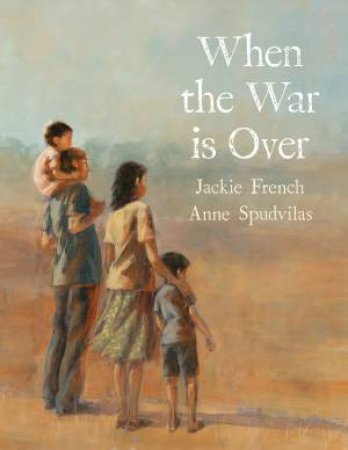Now the war is over
And they say the world is free,
Though somewhere guns are snarling,
You’ve come back to me.
War may never truly end, but there can be homecomings. From two of Australia's most highly regarded children's book creators, Jackie French and Anne Spudvilas, this is a powerful and moving book. ‘When the War is Over’ doesn’t focus on one particular war but covers a wide period from WW1 to current-day peacekeeping around the world and highlights important aspects to draw in readers. It shows the tragedy of war and the separation of loved ones, and their euphoria when they return home.
In this extremely moving text, Jackie French wrote a series of short stanzas, each related to a particular war from World War One to the current world conflicts and peacekeeping missions. Anne Spudvilas responded to Jackie French’s spare poems about each of these wars by using a mix of printmaking, oil paints on canvas and watercolour. For the earlier period of WW1, she used a printmaking method called monoprint because its soft almost black and white result suggests the colour of old photographs. She also used handwritten letters and old photographs in the design. And on the ‘peace’ page, the background is eco-dyed. The artwork also involved a lot of digital layering, using Photoshop to combine paintings with the photographed letters and map, and sometimes two pieces of artwork layered together.
One of the features of the work is the culturally diverse Australians and others depicted: a Japanese child gazing at a mushroom sky during the bombing of Hiroshima in 1945; an Aboriginal father during the Malayan Emergency; a child being passed to an Australian soldier in a rescue helicopter by a Vietnamese mother during the Vietnam War; Muslim women wearing headscarfs in the page depicting the Gulf Wars; the cover depicts a Japanese Australian couple and their two children. Symbols of peace include the origami cranes and actual cranes depicted on the page illustrating the Occupation of Japan; the dove of peace on the page regarding Peacekeeping missions.
This magnificent work ends on a note of hope with a family united and hopeful although ‘somewhere guns are snarling,’ still.

